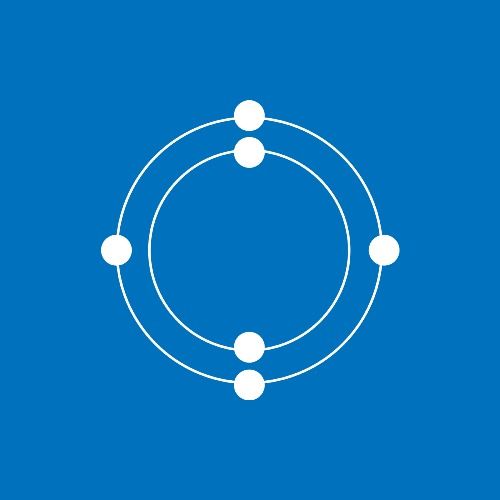Episode 171
[FOCUS] Grazing Lightly Farming with Kate Field
Episode Summary: This segment is from a longer episode featuring Kate Field, a regenerative farmer from Tasmania, Australia.
In this episode, we explore sustainable farming practices focusing on low-input systems to avoid overgrazing and carbon leakage. Emphasizing the importance of resting pastures and maintaining continuous plant growth, we discuss methods like holistic grazing to enhance soil health and carbon sequestration. This approach not only nurtures soil microbiology but also optimizes pasture recovery and organic carbon content, illustrating a harmonious balance with nature's rhythm.
To listen to the full episode go here.
To find out about Kate’s farm, check out https://www.leapfarm.com.au/
Resources mentioned in the episode:
Let’s Have a Think: Regenerative Farming
https://www.sacredcow.info/book
Footprint Network - Ecological Footprint Test
For more information on the project and to order your copy of the Carbon Almanac, visit thecarbonalmanac.org
Want to join in the conversation?
Visit thecarbonalmanac.org/podcasts and send us a voice message on this episode or any other climate-related ideas and perspectives.
Don’t Take Our Word For It, Look It Up!
You can find out more on pages 76, 116, 119,121,124, 200, 202, 205, 214, 216, 229, 231, 234 and 260 of the Carbon Almanac and on the website you can tap the footnotes link and type in 022, 598, 067, 069, 600, 569, 243, 218, 215, 214, 212, 107, 219, 105 and 119
-----
Featuring Carbon Almanac Contributors Katherine Palmer and Brian D Tormey
Katherine is an Aromatherapist and Workshop Coordinator from Canada.
Brian is a Real Estate Title Insurance Professional and Goat Farmer in the US.
-----
The CarbonSessions Podcast is produced and edited by Leekei Tang, Steve Heatherington and Rob Slater.
Transcript
a lot of farmers who will be listening
to this and potentially a lot of
2
:non-farm as well, might be shaking
their heads, but for us, we have a
3
:very low input system, which means
that we don't have maximal yields.
4
:So for us, it's grazing lightly.
5
:So that we don't overgraze.
6
:And by grazing lightly what
we're doing is ensuring that we
7
:don't have areas of bear ground.
8
:Bear ground will leak
carbon into the atmosphere.
9
:So keeping ground covered
is really important.
10
:Keeping the plants that are in
the soil, growing in their natural
11
:rhythm is also incredibly important.
12
:And so, uh, if they're constantly being
grazed, they'll be struggling to grow.
13
:So for us, what we do is we try
and rest areas of our farm at
14
:different stages of the growth cycle.
15
:We're always making sure that there's
something in the soil that's growing.
16
:So you might have a grass that
grows particularly well, like
17
:fallis over the winter period when
other grasses, particularly annual
18
:species, aren't growing very well.
19
:And what that means is that while a
fall, Polaris is growing, That plant is
20
:harnessing the sun, and it's actually
creating all the sugars and pumping them
21
:into the soil to feed the bacteria and the
fungi that are in the soil, and that keeps
22
:the soil and the soil micro biology alive.
23
:When the fall, Polaris dies back
and the other plants are going
24
:through their rapid growth phrase
and harnessing the sun's energy, they
25
:start pumping in the carbon sugars and
they also start feeding the bacteria.
26
:So there's always something growing
in our pasture, but we also rest
27
:our pasture to allow the plants once
they have been grazed to recover.
28
:And that's really an
important part of the cycle.
29
:Every time a, a plant is eaten
by an animal, It's more important
30
:that the leaves are torn rather
than cut, for instance, by,
31
:um, a slasher or a lawn mower.
32
:So it's the way the plants have
evolved, of course, because they've
33
:evolved with remnants eating them.
34
:So the pasture or the plants are, are torn
by the tongue and the teeth of the animal.
35
:And as the leaves are, um,
cut down from the base of the.
36
:So two are the roots in the soil
pruned back by the plant, cuz they've
37
:suddenly got all this root mass,
but they need to actually focus on
38
:putting energy now into the leaves.
39
:And so what that does is it leaves
the roots in the soil, um, but it
40
:prunes them back as such, which means
that there are some dead roots in
41
:the soil, which go on to improve the
organic carbon content of the soil.
42
:So this, process where you graze more
lightly and less frequently, , has
43
:a number of, descriptors, it can be
referred to as time managed grazing,
44
:holistic grazing, cell grazing.
45
:And it's, uh, really just a form of
managing your pastures , that can be.
46
:You've been listening to Carbon
Sessions, a podcast with carbon
47
:conversations for every day with
everyone from everywhere in the world.
48
:We'd love you to join the Carbon
Sessions so you too can share your
49
:perspectives from wherever you are.
50
:This is a great way for our community
to learn from your ideas and
51
:experiences, connect and take action.
52
:If you want to add your voice to the
conversation, go to the carbonalmanac.
53
:org slash podcast.
54
:and sign up to be part
of a future episode.
55
:This podcast is also part of
the Carbon Almanac Network.
56
:For more information, to sign up for
the emails, to join the movement,
57
:and to order your copy of The Carbon
Almanac, go to thecarbonalmanac.
58
:org.
59
:Be sure to subscribe and join
us here again, as together
60
:we can change the world.

